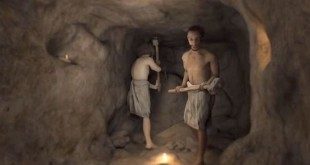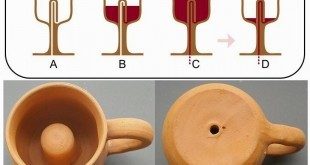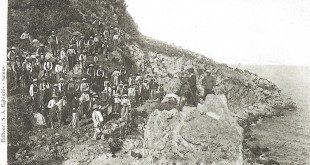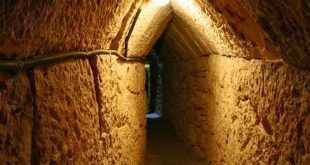“This place was the center of a great civilization”
This is the way that poet Giannis Ritsos characterizes the island of Samos.
Samos, an island of the north-eastern Aegean, lies east of the Ikarian Sea, has an area of 470 square miles and a coastline of about 79 miles.
The name Samos is attributed to Sami of Kefalinia (Zante) from where it is said that the first inhabitant of the island, Agkaios, who had taken part in the Argo-nautical campaign, had originated or to Samon, the daughter of Agkaios.
According to the geographer Meletios the name comes from Saos, the son of the ancient Greek God Hermes and Rini. on the other hand the historian Bochort supports the view that the name comes from the ancient nation Saious, who used to inhabit the island.
Scholars of eastern languages attribute the name to the word Sama of the Ionian dialect, which means height, due to the high mountains of the island. The first time that the name Samos is mentioned is in the hymn to Apollo in verse 41 of Homer. Samos was also called by many “Parthenia” during antiquity, from the Parthenos River where according to mythology Hera used to wash her hair.
Morever it was called “Melamfyllos”, “Dryoussa”, “Doryssa”, “Anthemis”, “Fyllas”, “Kyparissia”, “Stefani” and “Imvrassia”. Most of these adjectives have to do with the rich flora, which to the present day is abundant throughout the island. It is not coincidental that the Turks still call Samos “Susam Anda” (forest).
The true facts about the beginning of life on the island are obscured by numerous myths and legends that would hinder even the most ambitious of researchers. Nevertheless, most support the view that the first inhabitants of the island were the Niades, Neades or Miniades which were mythical monsters which were considered to be responsible for earthquakes and geological unrest, and remarkably according to the testimony of Heraclides Pontikos, their bones were scattered all over the island.
In the Paleontological Museum of Mytilinioi, Samos, the exhibits of remains of large animals, prove the existence of life millions of years ago.They date back to the “Pikermic fauna”, a period of the animal world in Greece, dating back to more than 13 million years ago.
Ancient Samos was a dazzling city with an exceptionally constructed man-made harbor which was protected by a huge breakwater with a length of 370 meters and a depth of 35 meters in the sea. The ancient breakwater is preserved intact to this day but due to the subsidence of the ground, it lies under the surface of the sea at the bottom of the Pythagorian cove.
The ancient city was built on the slope of the hill known today as the hill of “Panagia Spiliani” and was surrounded by walls 6.7 kilometers in length incorporating 31 towers.
The first inhabitants of the island were the Saioi who were succeeded by the Pelasgians. Excavations prove the existence of a Neolithic settlement around 6000 to 2800 B.C. This civilization is classified under the “Civilization of Salliagous”. It is paralleled with similar civilizations in Macedonia, Thrace, and, Mainland Greece based on the themes that are depicted on their pottery vessels and is far older than the Cycladic civilization. The next inhabitants were the Leleges who were followed by the Cares.
Herodotus limns that Homer visited Samos around the period of 1130-1120 B.C.
According to Thucydides the Leleges and the Cares were carriers of the Cycladic civilization whose presence was evident in Ikaria, Limnos and Troy.
After the break down of the Cycladic civilization by the Minoan civilization, a dispute followed between the Mycenae and the Minoans, where the former came out victorious. The first Mycenaean colonists arrive around 1360 B.C. led by King Agkaios who had been urged by the god Apollo to do so.
It is thought to be historically true that the island was colonized by inhabitants of Lesvos around 1140 B.C. under the leadership of Kydrolaos who was the son of the King of Lesvos.
On the island, monuments of older times, the so called “Cyclopean Walls”, whose historical identity is yet to be established, are also preserved. The colonization of the island by the Achaeans is completed around 1350 B.C. and by the Ionians around 900 B.C.
There is no evidence on the population changes which occur on the island until the 7th century, during which the island takes part in the Lilandian War and in the middle of the same century takes part in the 2nd Messinian War under the rule of King Amphicratis.
In the second half of the 7th century Samos establishes colonies in Samothrace, Amorgos and Tartissos, a city in southwestern Spain.
More contemporary colonies are Nagis and Kelenderis on the coast of Kylicias and the colonies Perinthos, Hereon Wall and Bisanthis on the coast of Propontis (Black Sea). Equally significant colonies were established in Southern Italy, Sicily and Egypt in those times.
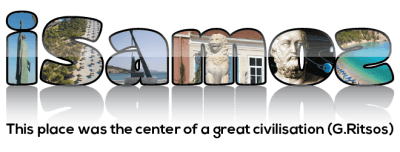 iSamos.gr Η ενημερωτική σελίδα της Σάμου! Εξερευνήστε τη Σάμο, τις παραλίες της, τη φύση της, τις ομορφιές της. Διαβάστε την ιστορία της Σάμου
iSamos.gr Η ενημερωτική σελίδα της Σάμου! Εξερευνήστε τη Σάμο, τις παραλίες της, τη φύση της, τις ομορφιές της. Διαβάστε την ιστορία της Σάμου



